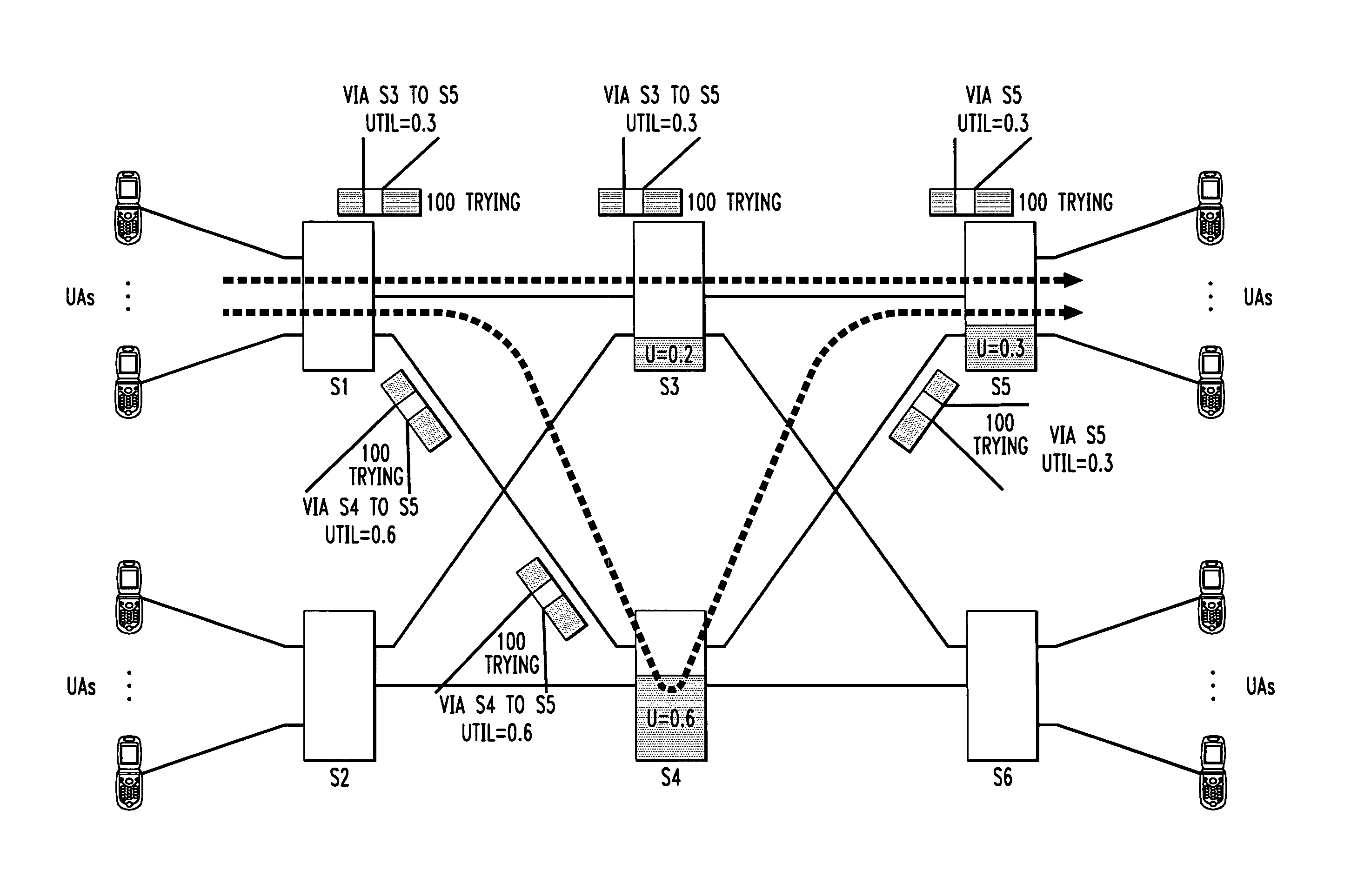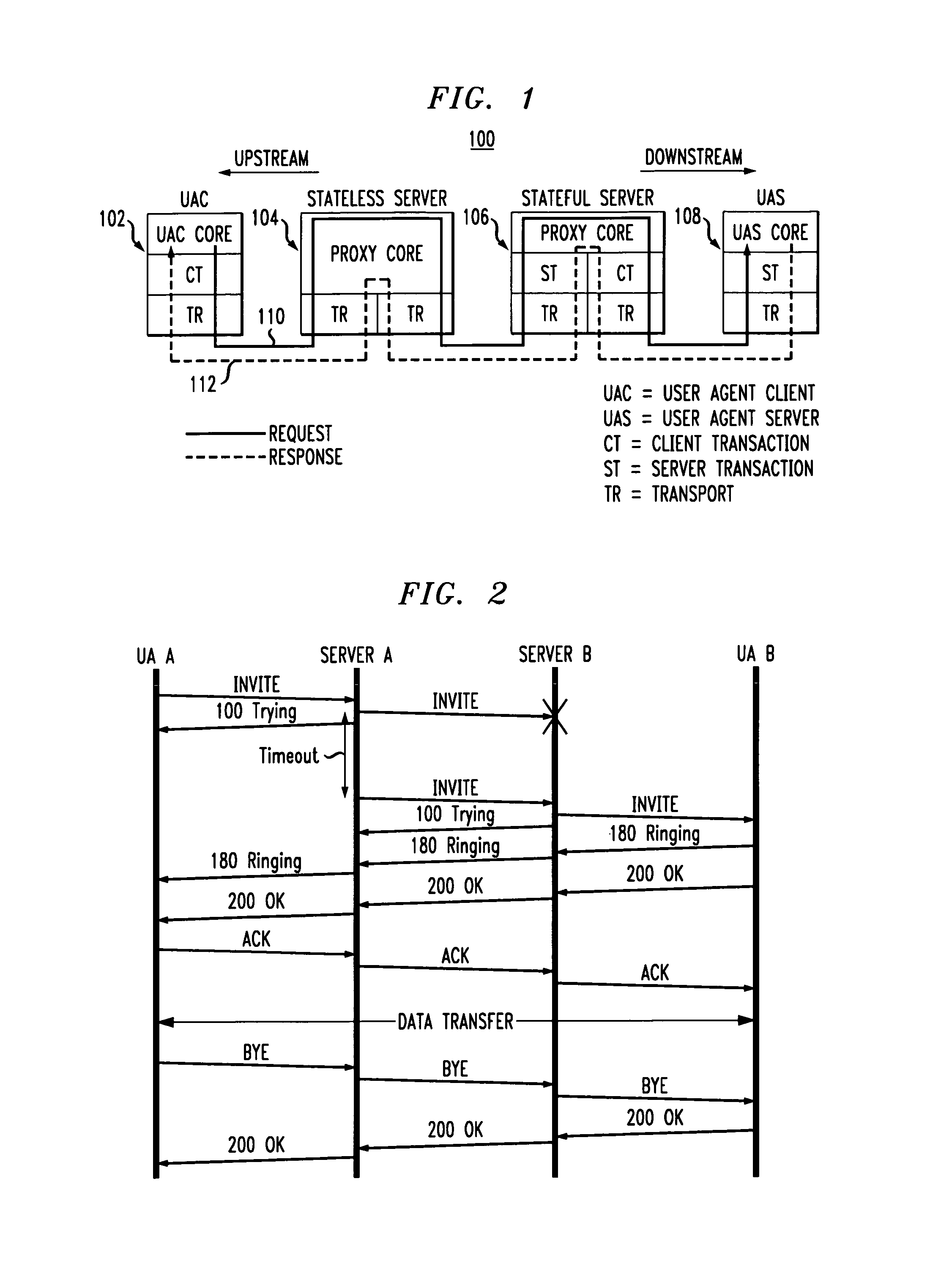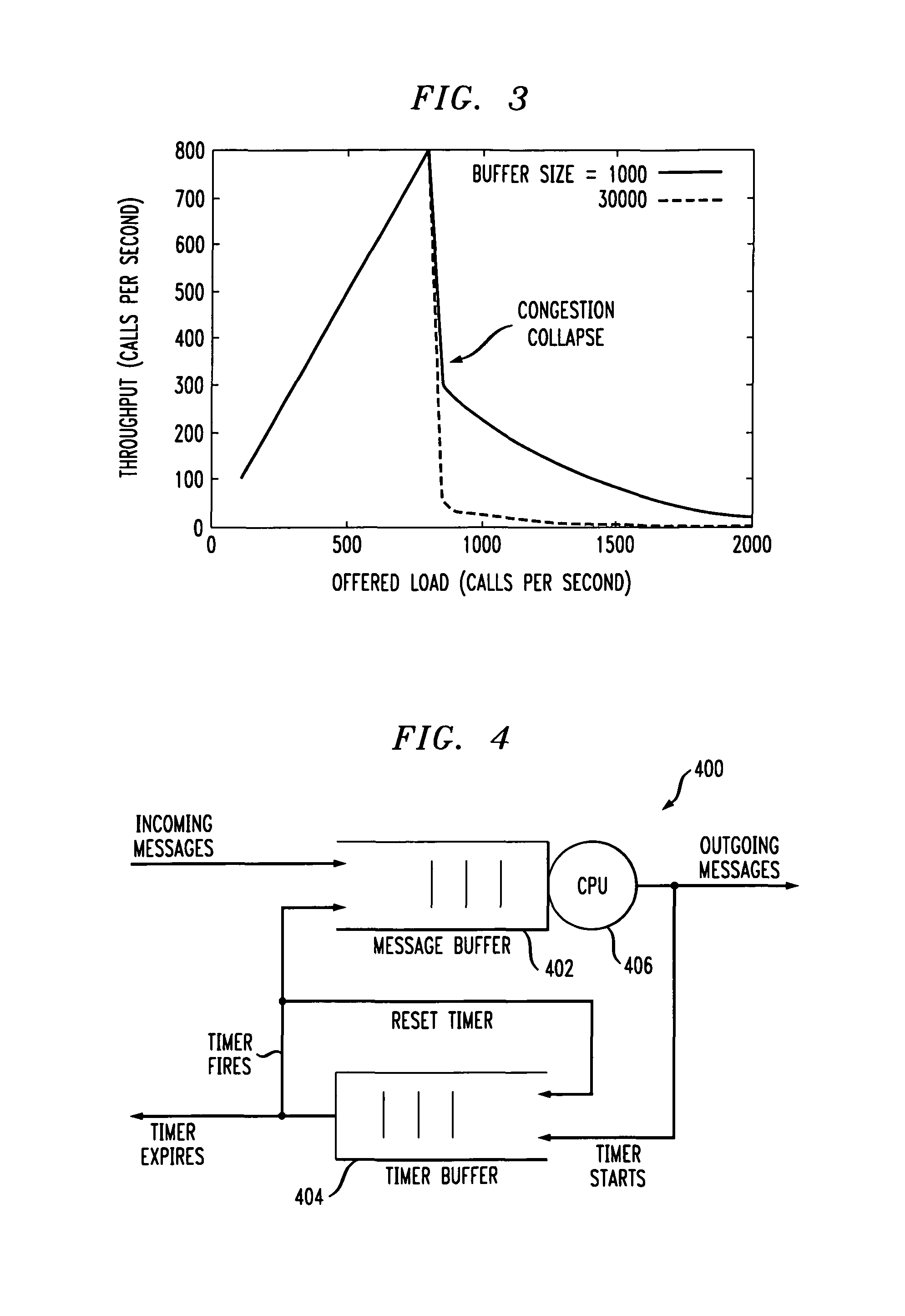Network load balancing and overload control
a network load balancing and overload control technology, applied in the field of communication networks, can solve problems such as overload control, failure to provide the desired performance level, and conventional load balancing techniques are often not well suited for use,
- Summary
- Abstract
- Description
- Claims
- Application Information
AI Technical Summary
Benefits of technology
Problems solved by technology
Method used
Image
Examples
Embodiment Construction
[0032]The present invention will be illustrated below in conjunction with exemplary SIP-based networks and associated load balancing and overload control techniques. It should be understood, however, that the invention is not limited to use with the particular load balancing or overload control techniques of the illustrative embodiments, nor with any particular type of network or other communication network. The disclosed techniques are suitable for use with a wide variety of other systems and in numerous alternative applications.
[0033]FIG. 1 shows a portion of a SIP-based network 100 in which an embodiment of the invention is implemented. The portion of the network 100 shown includes a communication path comprising a user agent client (UAC) 102 associated with a first end user, a first server 104, a second server 106, and a user agent server (UAS) 108 associated with a second end user. In the network 100, end users are handled by respective logical entities referred to as user agen...
PUM
 Login to View More
Login to View More Abstract
Description
Claims
Application Information
 Login to View More
Login to View More - R&D
- Intellectual Property
- Life Sciences
- Materials
- Tech Scout
- Unparalleled Data Quality
- Higher Quality Content
- 60% Fewer Hallucinations
Browse by: Latest US Patents, China's latest patents, Technical Efficacy Thesaurus, Application Domain, Technology Topic, Popular Technical Reports.
© 2025 PatSnap. All rights reserved.Legal|Privacy policy|Modern Slavery Act Transparency Statement|Sitemap|About US| Contact US: help@patsnap.com



